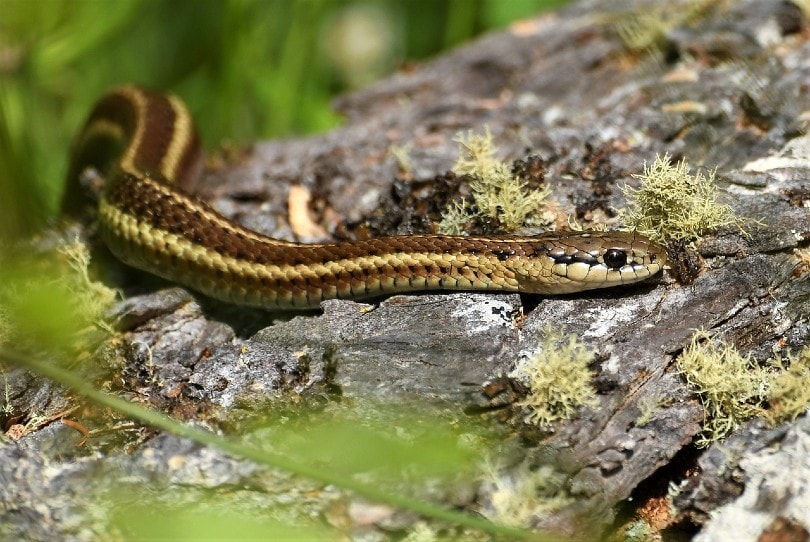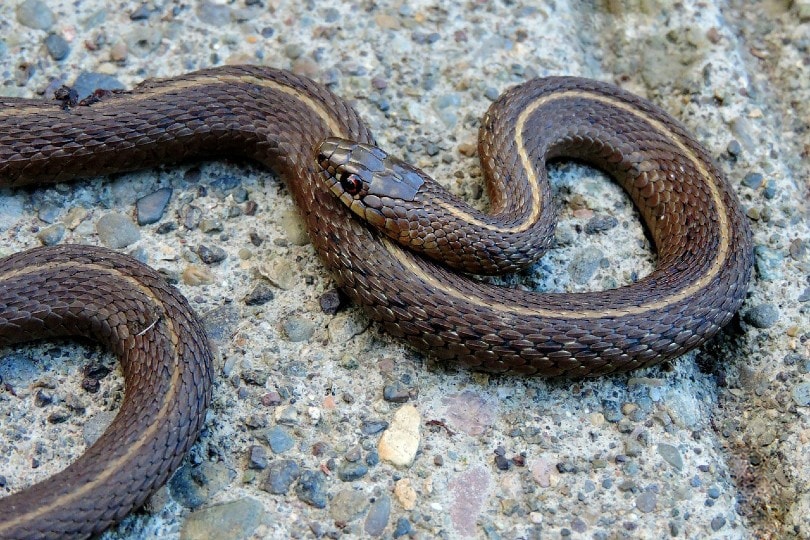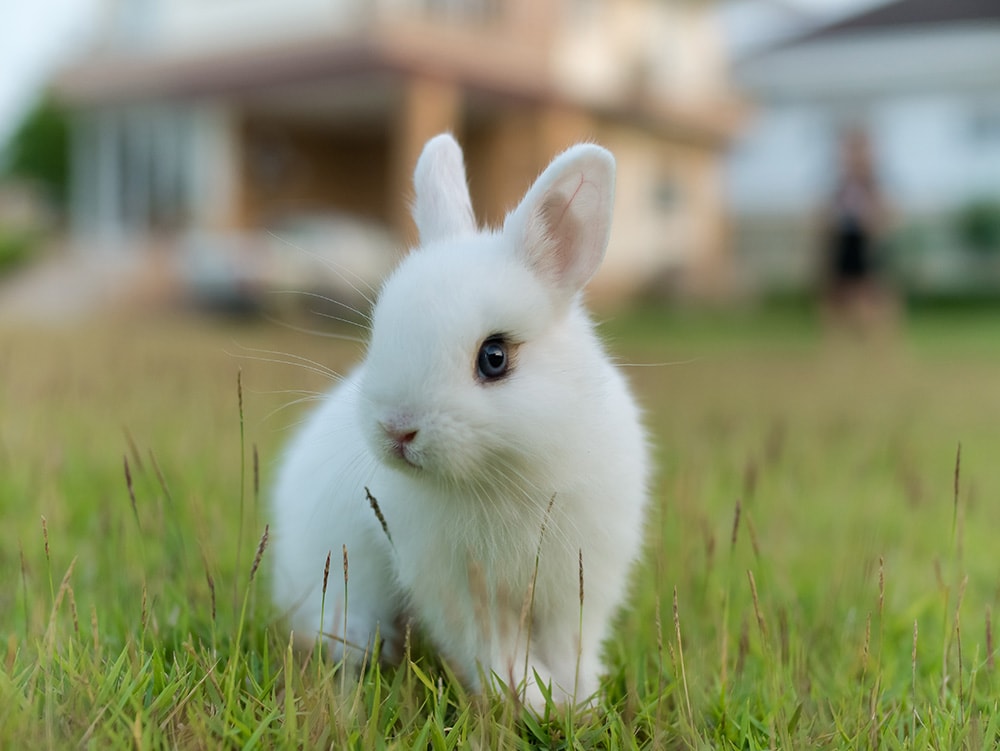

Garter snakes are one of the most common snake species in North America and are often kept as pets because they are easy to care for and relatively harmless. While these snakes do possess a mild neurotoxic venom, it is not dangerous to humans and they rarely bite. They typically only try to bite if they feel threatened, and they emit a foul smell that is difficult to get rid of.
Since these snakes are often found in backyards and are commonly kept as pets, you may be wondering what they eat. In this article, we look at what these snakes feed on in the wild and how to feed them as pets. Let’s get started!

What Do Garter Snakes Look Like?

Garter snakes come in a wide variety of colors and patterns depending on the species — of which there are 30 known varieties — but most are characterized by three longitudinal stripes that run down their backs and the sides of their body. These stripes are typically yellow or green but can vary depending on the species. Some have additional blotches of color between the stripes, and some have almost no detectable stripes at all.
Most species of Garter snakes are fairly small and typically only 23-30 inches long. However, some species are known to reach lengths of up to 5 feet.
Garter Snakes’ Diet in the Wild
Garter snakes, like many other snake species, have a fairly varied diet in the wild to ensure that they are getting complete nutrition. They may feed on various types of fish if they are available but prefer amphibians or small mammals. Slugs and leeches are also a favorite of Garters, and some have also been known to eat small snakes and lizards occasionally.
The main diet of wild Garters are small frogs and toads, and they’ll eat any that can fit into their mouth. Garters, especially juveniles, are also fond of earthworms, especially nightcrawlers. Many Garters will often feed on mice and other small mammals too, but since these snakes spend most of their time close to water, fish and small amphibians are their main diet.
Garter Snakes’ Diet in Captivity
When keeping a pet Garter, you’ll want to keep their diet as close to the way that it is in the wild as possible. Variety is the best option but not always possible, so mice — frozen or live — are the best choices. Mice are more nutritious than other foods like frogs or fish, and whole frozen mice will give your snake the complete nutrition that they require. Some Garter snakes may need training to eat them, though, so you may need to supplement their meals until they are accustomed to eating mice.
While captive Garters will enjoy frogs, they are difficult to find and can potentially be riddled with parasites, so you should avoid feeding them to Garters. Fish is also great occasionally but do not contain complete nutrition, and the same goes for slugs or leeches. Earthworms can be readily found in your yard but should be chopped up before feeding, as they are strong enough to crawl back out of your snake’s mouth! Avoid feeding them red wrigglers, as these are reportedly toxic to Garter snakes. Also, earthworms are deficient in calcium, so if worms are all you’re feeding your Garter, you’ll need to add calcium supplements.
Collecting lizards, frogs, or other snakes from the wild may have legal implications, so mice are generally the best options for captive snakes.
How to Feed Garter Snakes
How much and how often you feed your Garter will depend on their age and size and the food that you choose to give them. Worm-eaters will need to be fed more often than mouse-eaters, for example. In general, worm eaters can be fed two to three times per week, and mice-eaters one a week, although young snakes can be fed more frequently because they are still growing. It’s difficult to overfeed juveniles or worm-eaters, but when feeding mice, you’ll need to be careful because your snake can quickly become obese.

Final Thoughts
Garter snakes in the wild feed on various animals, from earthworms to frogs and even other smaller snakes. While it’s usually good advice to try to replicate the diet of your snake in captivity, this is difficult and potentially harmful with Garter snakes because their main diet of amphibians may harbor harmful parasites. Mice are the easiest options because they are readily available and nutritionally balanced, but your Garter will love an earthworm or two occasionally too!
Featured Image Credit: Nature-Pix, Pixabay
Nicole is the proud mom of Baby, a Burmese cat and Rosa, a New Zealand Huntaway. A Canadian expat, Nicole now lives on a lush forest property with her Kiwi husband in New Zealand. She has a strong love for all animals of all shapes and sizes (and particularly loves a good interspecies friendship) and wants to share her animal knowledge and other experts’ knowledge with pet lovers across the globe.






